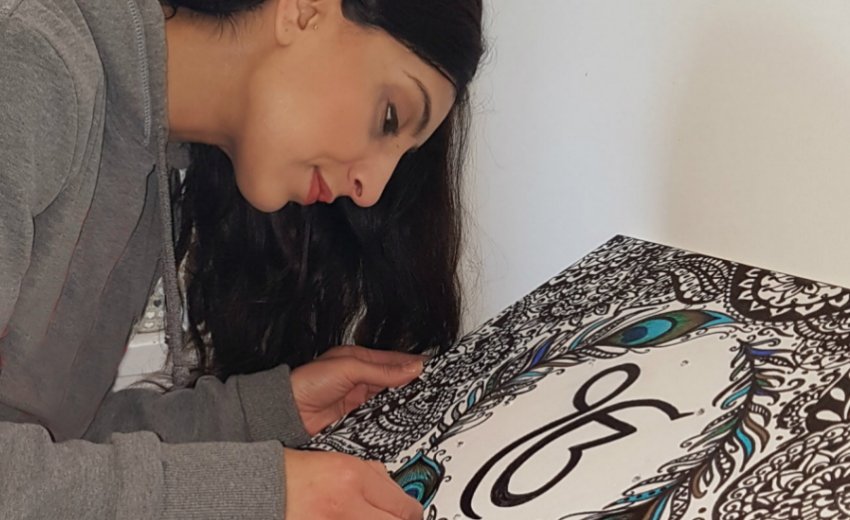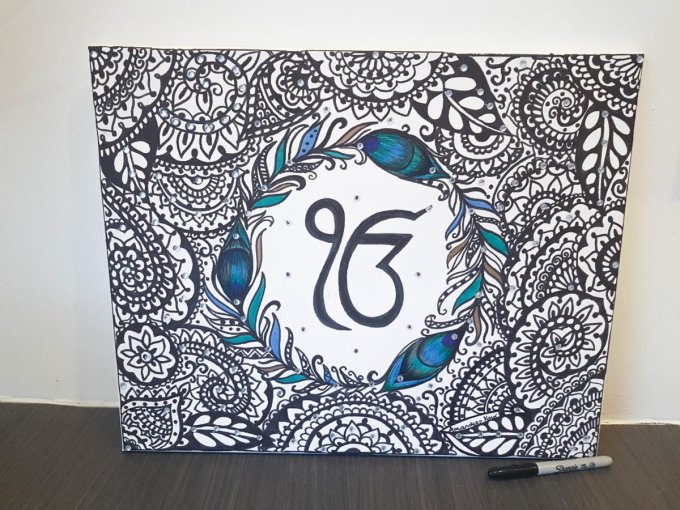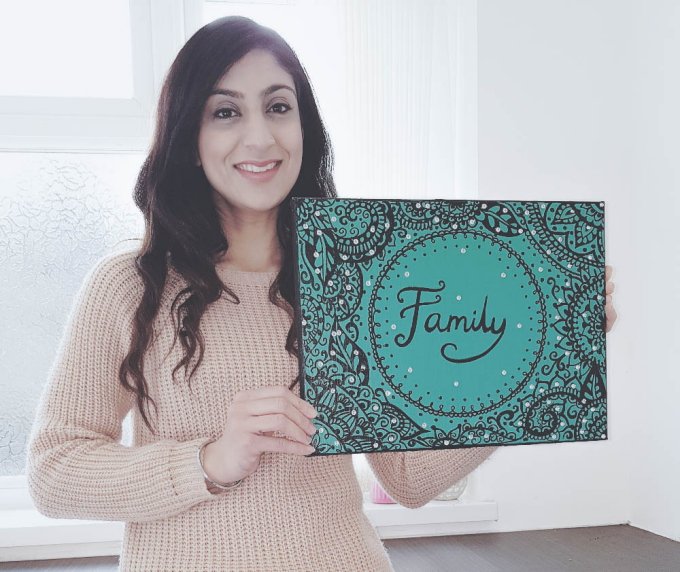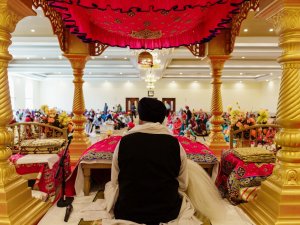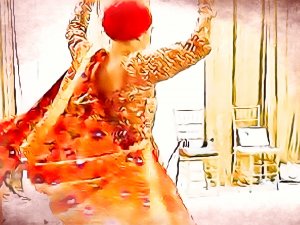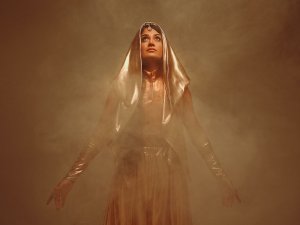Amandeep Kaur is a Sikh woman born and brought up in the UK. Since 12 years old, she has been fascinated with Indian art and very inspired by work of the Twin Sisters, Amrit and Rabindra Kaur Singh. We got the chance to chat with Amandeep and learn more about her artistic process.
What do you hope your audience gets out of viewing your art?
I want my art to spread positivity, happiness, and chardi kala vibes (positive attitude and being in high spirits). My work mostly consists of religious pieces, which take positive and uplifting quotes from Guru Granth Sahib Ji. Art therapy also plays a huge part in my work, which feature intricate henna and mandala patterns. These patterns themselves are uplifting and therapeutic for those viewing them.
We all need to take a moment to appreciate the simple things in life and be thankful to the Divine; during good and bad times. Life offers blessings as well as lessons and we must embrace all. I endeavour to touch the souls of many with my pieces which are uniquely and bespokely crafted.
What is your personal understanding of Ek Onkar?
My personal understanding of Ek Onkar is there is only One Divine, One Supreme Reality. This is paramount to the understanding of Sikh beliefs. The term Ek Onkar features in many of my art pieces and fits perfectly alongside my portraits of Guru Nanak Sahib Ji and the Mool Mantra.
How and when did you get interested in art?
From a young age I have been fascinated with Indian art. I completed my A Levels in Art, Philosophy and Psychology of Religion, Panjabi, and English Literature. This further reinforced my passion for art and my interest in my own Sikhi and my identity. I went on to complete a Foundation Course Diploma in Art and Design and a BA Honours in Visual Communication, specialising in Illustration.
Why do you create art? What drives you?
I didn’t set out to use art as a healing mechanism, but, when I reflected on it, I saw how much it helped me find peace and calm. I realised that art made me happy and helped me forget all the troubles for a short while each day. When I’m working on a creative project, I am fully immersed in it, and this is what drives me.
What lessons in Sikhi have you learned through art?
My art has brought me closer to Sikhi and Waheguru Ji and I have learnt how powerful and meaningful quotes from Guru Granth Sahib really are. Guru Granth Sahib is a guide for leading a spiritual and good life. One of my favourite shabads was revealed to Guru Nanak Sahib on Ang 473 of Guru Granth Sahib.
What Sikhi values are embodied in your art?
The Gurus promoted all human beings as one and the same, and they are all above discrimination. The Gurus showed real love for all of humanity. Muslims were equally dear to them as Hindus, or any others. I have enjoyed completing various Hindu art work and pieces for other religions. We all have the same Divine.
Through my art, I want to spread the message of the importance of strong family unity and love. I have created many pieces for family or loved ones to give as gifts to one another with a personal message from a sister to a brother, or a mother to a daughter etc. Family is very important to me and they have played a big part in encouraging me to pursue my art.
What’s your advice for young Kaurs who wish to pursue art?
During my time at university, the majority of my work was based on my Panjabi culture. My strong Panjabi influence made my work very different from that of my peers, and although at times this had its disadvantages, I refused to follow the crowd and continued to link my art to my Indian and Sikh heritage. My advice would be to follow your heart, and with hard work there is an opportunity for Kaurs to succeed with their art.
You can see Amandeeps art, purchase a piece, or request a custom artwork at her website:
